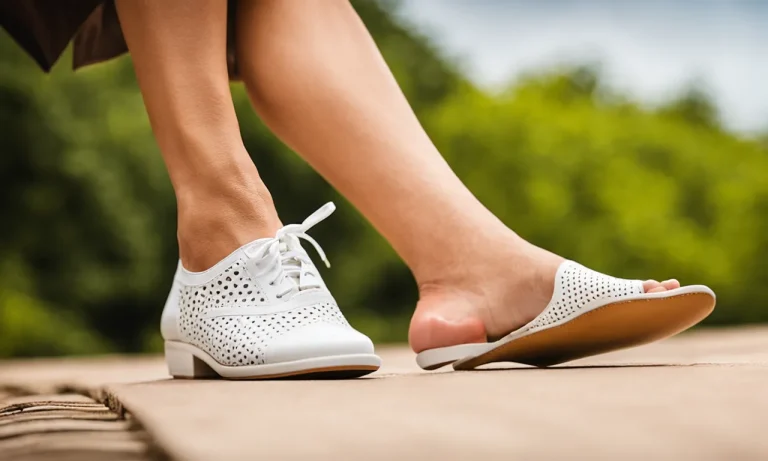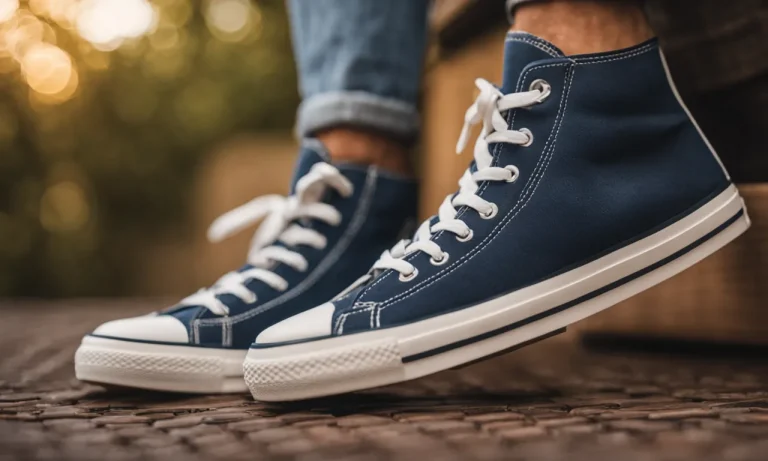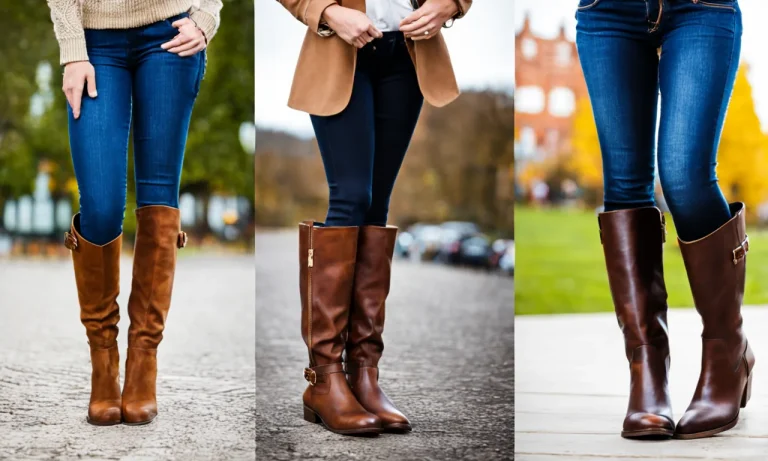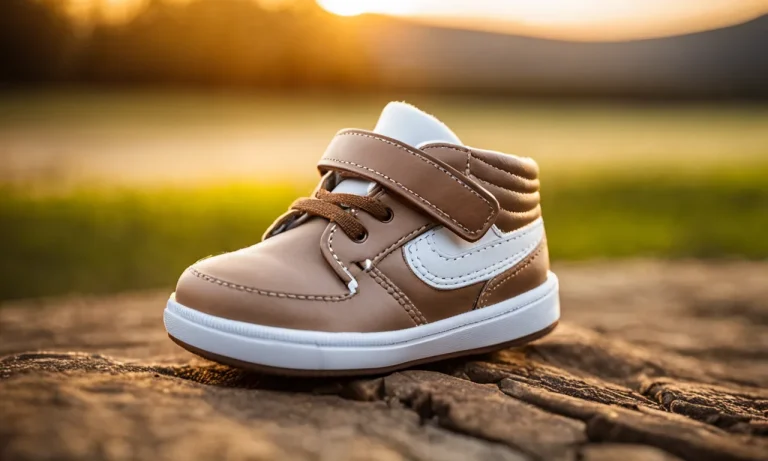Tactical boots have become a popular footwear choice for many outdoor enthusiasts in recent years. With their rugged build and hardcore aesthetic, it’s easy to see why some may consider tactical boots a viable option for hiking.
If you’re short on time, here’s a quick answer to your question: Tactical boots can work for light to moderate hiking, but may not provide enough flexibility and traction for more challenging terrain. Hiking-specific boots are usually a better choice for serious hiking and backpacking.
In this approximately 3000 word article, we’ll take an in-depth look at how suitable tactical boots really are for hiking. We’ll compare the key features of tactical and hiking boots, analyze the pros and cons of using tactical boots on the trail, and provide tips for choosing the best tactical boots if you do decide to use them for hiking.
Key Differences Between Tactical and Hiking Boots
Weight and bulk
Tactical boots are designed for military and law enforcement professionals who require footwear that can withstand extreme conditions and carry heavy loads. As a result, they tend to be heavier and bulkier compared to hiking boots.
Hiking boots, on the other hand, are specifically designed for outdoor enthusiasts who prioritize lightweight and nimble footwear to enhance their hiking experience. The lighter weight of hiking boots allows for greater agility and less fatigue during long hikes.
Traction and grip
Tactical boots are built with durable rubber outsoles that provide excellent traction and grip in various terrains, including rugged and slippery surfaces. They are specifically designed to offer stability and support in demanding situations.
Hiking boots, while also designed to provide good traction, often have different types of outsoles that are optimized for hiking trails and uneven terrain. These outsoles are designed to provide grip on rocks, loose gravel, and muddy surfaces commonly encountered during hikes.
Flexibility
Tactical boots are typically made with stiff materials to provide maximum ankle support and stability. This makes them less flexible compared to hiking boots. Hiking boots, on the other hand, are designed to offer a greater range of motion, allowing for natural foot movement.
The increased flexibility in hiking boots allows hikers to navigate uneven terrain more easily and comfortably.
Water resistance
Tactical boots are often made with waterproof or water-resistant materials to protect the feet in wet or rainy conditions. This is especially important for military and law enforcement personnel who frequently encounter wet environments.
Hiking boots also come with varying levels of water resistance, but they are not typically designed to withstand extreme wet conditions. Hikers often opt for waterproof socks or gaiters to keep their feet dry during hikes in wet environments.
Fit and ankle support
Tactical boots are known for their snug fit and excellent ankle support. They are designed to provide stability and prevent ankle injuries during intense physical activities. Hiking boots, while also providing ankle support, are often designed with a more relaxed fit to accommodate different foot shapes and provide comfort during long hikes.
The level of ankle support in hiking boots may vary depending on the specific model and intended use.
Pros of Using Tactical Boots for Hiking
Durability and toughness
Tactical boots are designed to withstand the toughest conditions, making them highly durable and long-lasting. They are made with high-quality materials such as nylon, leather, and rubber, which provide excellent resistance against wear and tear.
Whether you’re hiking on rocky terrains or through muddy trails, tactical boots can handle it all. Their reinforced construction and sturdy soles ensure that they can withstand the rigors of hiking, providing you with the necessary support and protection.
Versatility
One of the major advantages of tactical boots is their versatility. They are not only suitable for hiking but can also be used for various outdoor activities such as camping, hunting, and trekking. With their rugged design and all-terrain capabilities, tactical boots allow you to explore different environments with ease.
Whether you’re traversing through forests, crossing streams, or climbing steep slopes, tactical boots provide the necessary grip and stability to tackle any challenge.
Comfort features
Tactical boots are built with comfort in mind. They often come with cushioned insoles and padded collars to provide extra support and cushioning for your feet. Some tactical boots also feature moisture-wicking technology to keep your feet dry and comfortable, even during long hikes.
Additionally, many tactical boots have adjustable lacing systems that allow you to customize the fit according to your preference, ensuring maximum comfort throughout your hiking adventure.
Eye-catching aesthetic
Aside from their practical benefits, tactical boots also offer a stylish and eye-catching aesthetic. With their rugged and military-inspired design, these boots add a touch of adventure and adventure to your hiking gear.
Whether you prefer a classic black or a more tactical camo pattern, there are plenty of options to suit your personal style. So not only will you be well-prepared for your hiking expedition, but you’ll also look great doing it.
Cons of Using Tactical Boots for Hiking
Not specialized for hiking terrain
Tactical boots are primarily designed for military or law enforcement purposes, which means they may not be optimized for the specific challenges of hiking terrain. While they offer durability and protection, they may lack the specialized features found in hiking boots, such as enhanced grip on uneven surfaces or waterproofing capabilities.
Can be stiff and restrict ankle flexion
Tactical boots are known for their sturdy construction, which can sometimes result in a lack of flexibility. This stiffness can restrict ankle movement and make it more challenging to navigate rough or uneven terrain.
Hiking boots, on the other hand, are designed to provide the necessary flexibility and support for long hikes.
Often have less traction
When it comes to hiking, traction is crucial for maintaining stability and preventing slips and falls. While some tactical boots may have decent traction, they are generally not as specialized in this area as hiking boots.
Hiking boots are equipped with specific outsole designs and materials that provide superior grip on various terrains, including wet and slippery surfaces.
Tend to be heavier
One of the main drawbacks of tactical boots for hiking is their weight. Due to their rugged construction and protective features, tactical boots are often heavier than hiking boots. This extra weight can be a significant factor, especially during long hikes or when carrying a heavy backpack.
Hiking boots are typically designed to be lightweight, allowing for more comfortable and efficient movement.
Not designed for water crossings
Tactical boots are generally not designed to handle water crossings or wet conditions. While some models may have minimal water resistance, they are not built to withstand prolonged exposure to water. Hiking boots, on the other hand, often come with waterproof membranes or treatments that keep your feet dry and comfortable even in wet environments.
When considering whether tactical boots are suitable for hiking, it’s important to weigh these cons against the potential benefits they may offer. It’s always recommended to choose footwear specifically designed for hiking, as they are purpose-built to provide the necessary comfort, support, and protection for outdoor adventures.
How to Choose the Best Tactical Boots for Hiking
Prioritize ankle support and flexibility
When looking for the best tactical boots for hiking, one of the most important factors to consider is ankle support. Hiking often involves traversing uneven terrain and navigating through rocks and roots, which can put strain on your ankles.
Tactical boots with a higher ankle height provide better stability and support, reducing the risk of ankle sprains or injuries. Additionally, it is essential to look for boots that offer flexibility, allowing your feet to move naturally as you hike.
This will enhance your comfort and reduce the chances of developing blisters or hotspots.
Look for a lightweight tactical boot
Weight is another crucial aspect to consider when choosing tactical boots for hiking. A heavy boot can quickly tire your legs, making each step more challenging and less enjoyable. Opt for lightweight tactical boots that allow you to move more freely and comfortably during your hikes.
These boots are typically made from durable materials that offer excellent protection without sacrificing agility.
Choose a tactical boot with hiking-friendly traction
Hiking trails can be slippery, especially when it’s wet or muddy. To ensure your safety and stability, select tactical boots with hiking-friendly traction. Look for boots with deep lugs on the outsole, as they provide better grip and traction on various terrains.
This will help you maintain your balance and prevent slips and falls, even in challenging conditions.
Make sure it fits well out of the box
Fit is paramount when it comes to hiking boots. Ill-fitting boots can lead to discomfort, blisters, and even injuries. When trying on tactical boots, make sure they fit well straight out of the box. They should feel snug but not tight, with enough room for your toes to move comfortably.
Take the time to walk around in them and test their fit before making a purchase. Remember that everyone’s feet are unique, so what works for someone else may not work for you.
Consider waterproofing
Depending on the type of hiking you plan to do, waterproofing may be an essential feature to look for in tactical boots. Wet feet can quickly lead to discomfort and increase the risk of blisters or other foot problems.
If you anticipate hiking in wet or rainy conditions, consider investing in waterproof tactical boots. These boots are designed to keep your feet dry and protected, allowing you to enjoy your hikes regardless of the weather.
Top Tactical Boots for Light to Moderate Hiking
When it comes to hiking, having the right footwear is essential for comfort and safety. While tactical boots are primarily designed for military and law enforcement use, some models can also be great for light to moderate hiking.
These boots are built to withstand rugged terrains and provide excellent support to the wearer. Here are some top tactical boots that you can consider for your hiking adventures:
Under Armour Valsetz RTS Boots
The Under Armour Valsetz RTS Boots are a popular choice among hikers due to their lightweight design and durability. These boots feature a synthetic leather and textile upper, providing both flexibility and breathability.
The UA ClutchFit ankle support system ensures stability and prevents ankle roll, making them suitable for uneven terrains. Additionally, the Micro G foam cushioning in the midsole offers excellent shock absorption for a comfortable hiking experience.
5.11 ATAC Storm Boots
The 5.11 ATAC Storm Boots are known for their rugged construction and superior traction. These boots are made from full-grain leather and nylon, making them highly durable and resistant to abrasion. The moisture-wicking lining keeps your feet dry, while the cushioned insole provides all-day comfort.
With their oil and slip-resistant outsole, these boots offer excellent grip on various surfaces, making them ideal for hiking in wet or slippery conditions.
GARMONT T8 NFS Boots
The GARMONT T8 NFS Boots are designed for both military use and outdoor enthusiasts. These boots are made with a combination of nylon webbing and suede leather, providing durability and flexibility. The Vibram sole offers excellent traction and stability, allowing you to tackle challenging terrains with ease.
The boots also feature a padded collar and tongue for added comfort, making them suitable for long hikes.
Salomon Quest 4D Forces Boots
The Salomon Quest 4D Forces Boots are a favorite among hikers for their exceptional comfort and performance. These boots feature a combination of synthetic and textile materials, offering breathability and flexibility.
The Contagrip outsole provides excellent traction on both wet and dry surfaces, while the OrthoLite sockliner offers cushioning and support. The 4D Advanced Chassis ensures stability and reduces fatigue during long hikes, making them a reliable choice for outdoor adventures.
Danner Tachyon Boots
The Danner Tachyon Boots are lightweight yet sturdy, making them suitable for hiking and other outdoor activities. These boots are made with a combination of synthetic leather and nylon, providing durability and breathability.
The open-cell polyurethane footbed offers cushioning and support, while the rubber outsole provides excellent traction. The boots also feature a speed lace system for quick and easy adjustments, allowing you to customize the fit according to your preference.
Before making a purchase, it’s important to consider factors such as the terrain you’ll be hiking on, the weather conditions, and your personal preferences. Additionally, it’s recommended to try on the boots and walk around in them to ensure a proper fit and comfort. Happy hiking!
Conclusion
While dedicated hiking boots are still the top choice for more demanding treks, tactical boots can work well for light to moderate day hiking. Focus on choosing a pair with ample flexibility, traction, and water resistance.
With the right tactical boots, you can hike comfortably while still looking ready for adventure.
However, for backpacking trips or challenging high-mileage hikes, stick with boots designed specifically for hiking. They offer better overall ergonomics and comfort for logging long days on the trail.
So consider your hiking needs and style preferences carefully when deciding between tactical and hiking boots.






